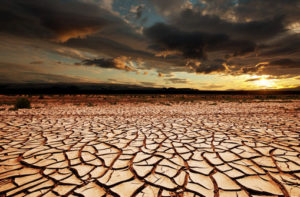New World Bank report warns climate change could force 216 million people to migrate internally
 The world is facing an ominous reality. Climate change is happening and affecting the way of life of people, economies and the future of life on planet earth, whether people believe it or not. Some coastal communities of the world are being washed away by sea erosion, while some agricultural communities are diminishing in size due to low yields and limited resources to sustain lives, and sometimes the dire conditions created by dwindling resources have led to conflict in communities that were once peaceful.
The world is facing an ominous reality. Climate change is happening and affecting the way of life of people, economies and the future of life on planet earth, whether people believe it or not. Some coastal communities of the world are being washed away by sea erosion, while some agricultural communities are diminishing in size due to low yields and limited resources to sustain lives, and sometimes the dire conditions created by dwindling resources have led to conflict in communities that were once peaceful.
A new World Bank report, the second part of an earlier one has predicted how the impacts of climate change would force people to migrate within their own countries.
According to the report titled, Groundswell, a sequel to an earlier one, some 216 million people would be forced to move from their current places of abode to new spaces within their own countries by 2050.
The sequel includes projections and analysis of internal climate migration for three new regions: East Asia and the Pacific, North Africa, and Eastern Europe and Central Asia, uses qualitative analyses of climate-related mobility in countries of the Mashreq and in Small Island Developing States (SIDS).
The World Bank says this new report builds on the scenario-based modeling approach of the previous Groundswell report from 2018, which covered sub-Saharan Africa, South Asia, and Latin America.
It indicates that the two reports’ combined findings provide, for the first time, a global picture of the potential scale of internal climate migration across the six regions of the world, allowing for a better understanding of how slow-onset climate change impacts, population dynamics, and development contexts shape mobility trends. They also highlight the far-sighted planning needed to meet this challenge and ensure positive and sustainable development outcomes, it added.
The report shows that the combined results across the six regions reveal that without early and concerted climate and development action, as many as 216 million people could move within their own countries due to slow-onset climate change impacts by 2050.
They will migrate from areas with lower water availability and crop productivity and from areas affected by sea-level rise and storm surges, and hotspots of internal climate migration could emerge as early as 2030 and continue to spread and intensify by 2050, it states.
The report also finds that rapid and concerted action to reduce global emissions, and support green, inclusive, and resilient development, could significantly reduce the scale of internal climate migration.
Commenting, Juergen Voegele, Vice President of Sustainable Development, World Bank, said: “The Groundswell report is a stark reminder of the human toll of climate change, particularly on the world’s poorest—those who are contributing the least to its causes. It also clearly lays out a path for countries to address some of the key factors that are causing climate-driven migration.”
The report also deploys a scenario-based approach, and explores potential future outcomes, which can help decision-makers plan ahead. The approach, it adds, allows for the identification of internal climate in- and out- migration hotspots, namely the areas from which people are expected to move due to increasing water scarcity, declining crop productivity, and sea-level rise, and urban and rural areas with better conditions to build new livelihoods.
Additionally, the report provides a series of policy recommendations that can help slow the factors driving climate migration and prepare for expected migration flows, including:
- Reducing global emissions and making every effort to meet the temperature goals of the Paris Agreement.
- Embedding internal climate migration in far-sighted green, resilient, and inclusive development planning.
- Preparing for each phase of migration, so that internal climate migration as an adaptation strategy can result in positive development outcomes.
- Investing in better understanding of the drivers of internal climate migration to inform well-targeted policies.
By Emmanuel K. Dogbevi
Copyright ©2021 by NewsBridge Africa
All rights reserved. This article or any portion thereof may not be reproduced or used in any manner whatsoever without the express written permission of the publisher except for the use of brief quotations in reviews.
